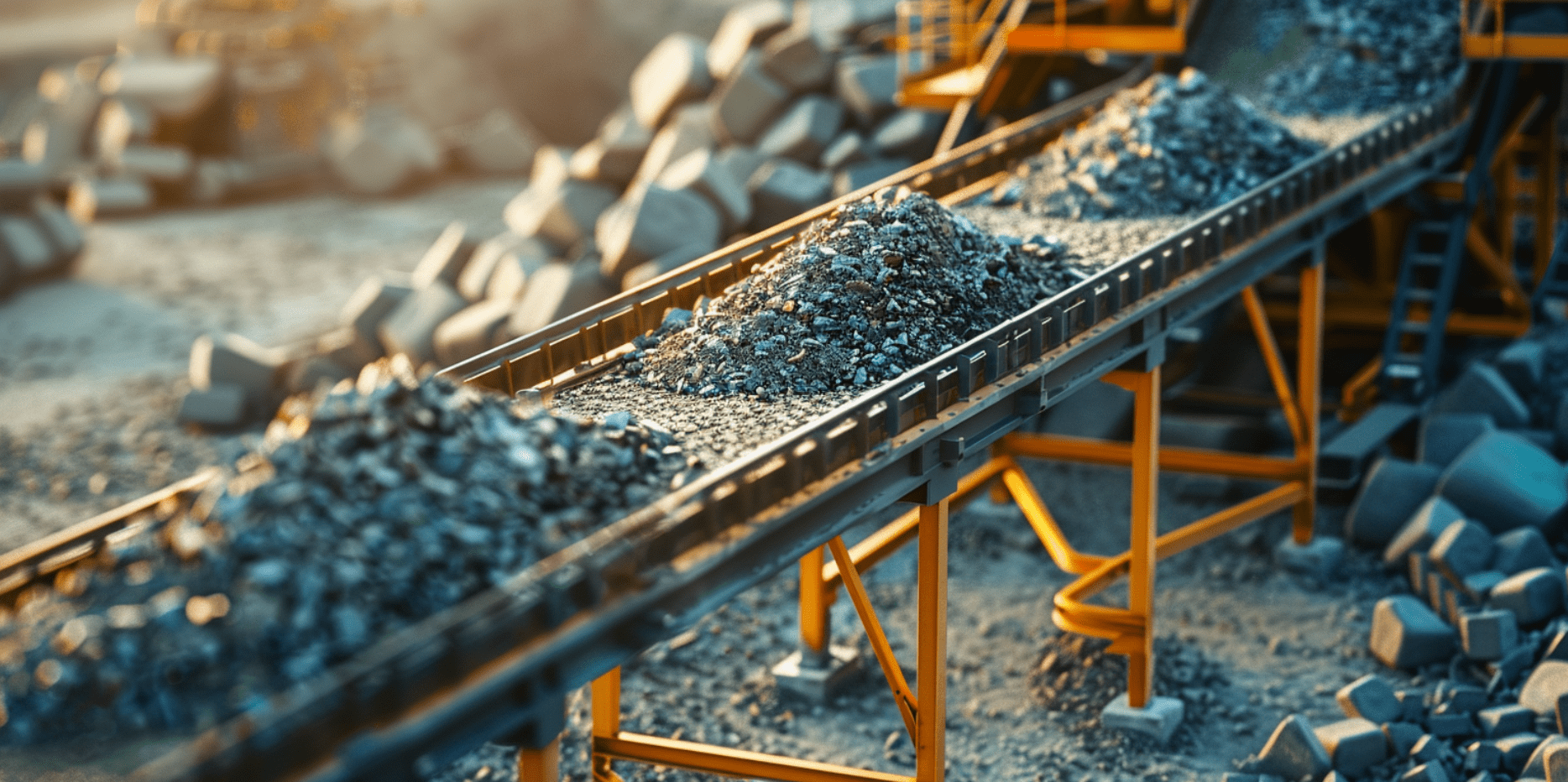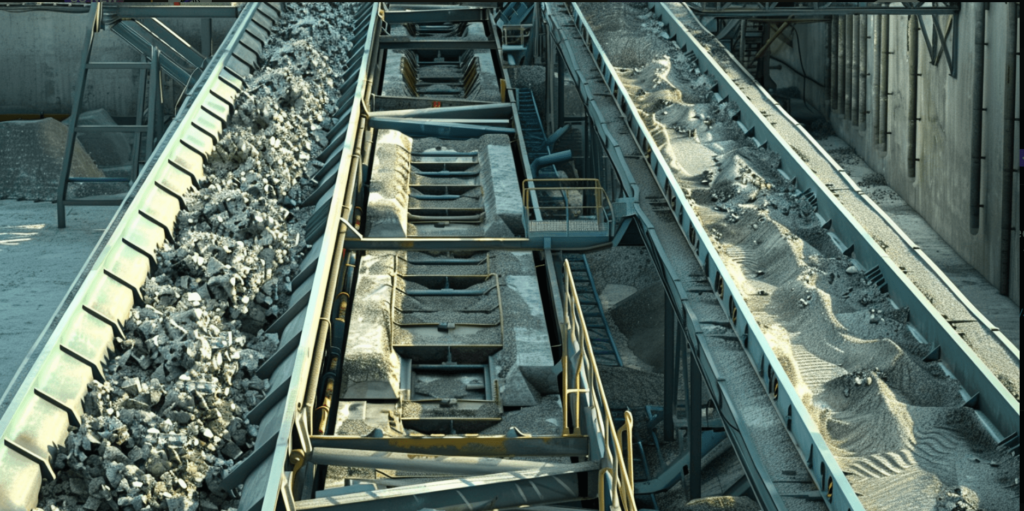
In recycling, picking the best conveyor is key, especially when considering steel belt conveyors and complete turn-key solutions. It can mean a lot for how well a recycling plant works. The suitable conveyor helps with sorting and improves the process for the environment and business by incorporating high-quality systems to handle a wide range of materials.
Importance of Choosing the Right Conveyor System
Choosing the right conveyor system is crucial for any recycling plant. It helps sort materials well and use resources better, ensuring high-quality results. This lowers plants’ impact on the planet, which is a big aim of recycling.
A custom conveyor system fits a plant’s needs, including steel belt conveyors and complete turn-key solutions or more basic setups. This means it can handle different waste types or ways of working, such as C&D materials or mixed solid waste. The right conveyor solutions boost a plant’s work, reduce waste, and increase its success.
We’ll dive into what to think about when selecting a conveyor system. This includes how it helps the environment, makes work better, and what to look for in a top system.
Understanding Your Facility’s Needs
Before buying a conveyor system, it is key to know what your recycling facility needs. Think about what materials your facility will process, and consider how much and how fast you need to move these materials.
Types of Materials Processed
Recycling plants deal with different items, such as plastic, metal, and waste. Each material needs a specific handling method. For example, light plastics use a special belt, while heavy metals need another. Solid waste might need a strong and flexible conveyor system.
Volume and Throughput Requirements
Knowing how much material your facility moves and how fast is essential. Facilities that move a lot of things quickly need reliable conveyors. Make sure your recycling conveyor systems choice fits your current and future needs well. This way, they will run smoothly without any issues.
Grasping these basic needs helps you make a smart choice for your custom recycling facility. It ensures you select a conveyor that works for you and meets your needs just right.

Types of Conveyor Systems
Choosing a suitable recycling conveyor system is key for any recycling facility. There are several conveyor types, each made for different uses. Let’s explore the main designs and when to use them, including systems to handle a wide range of recycling needs.
Belt Conveyors
Belt conveyors are very common in recycling facilities. They work well for moving many materials, from plastic to mixed solid waste. Their continuous belt design helps keep operations smooth and reduces spills, making it perfect for sorting items.
Chain Conveyors
Chain conveyors can bear heavy loads, like scrap metal and glass. They use chains to move materials, adding strength and dependability. Best used in places with rough use and big loads, they offer great durability.
Roller Conveyors
Roller conveyors can transport items like pallets and bins. Their rollers cut down on friction for easy movement. They excel in areas where products are sorted by hand or prepared for more work.
Vibrating Conveyors
Vibrating conveyors transport materials through vibrations. They are great for moving fine materials like glass cullets. These conveyors are perfect when you need precise movement or specific feed rates.
Key Factors to Consider
Selecting the right conveyor system for your recycling facility is critical. You need to look at many things. Make sure the system you pick gives you good results right away and for a long time, especially if you are looking at conveyor systems for sale that include belt conveyors and complete turn-key setups.
Here’s a list of important points:
Durability and Maintenance
Your conveyor system must be tough. Choose materials that can handle a lot of use and tough conditions. This will save you money because you’ll have less downtime, and the system will last longer.
Energy Efficiency
Your system should use energy wisely to save money and help the environment. Find a system that saves on power without sacrificing performance, such as high-quality steel belt conveyors. This is good for your wallet and the planet.
Flexibility and Scalability
A flexible conveyor system can change to meet your needs. It might need to handle different materials or higher amounts. Make sure the system can be easily expanded without big changes.
Cost and Budget Considerations
Setting a budget is key before investing in a system, especially if considering conveyor systems ranging from light-duty to heavy-duty options. Think about the long-term costs and benefits. Include operational costs, upkeep, and energy use to make a smart financial choice.
Advanced Features and Technology
In today’s changing world, the recycling industry always looks for new ways to improve. It’s important to use advanced features and technology in conveyor systems. This helps make work faster and safer. By adding automation and smart recycling sorting solutions, we can do more. Safety features also play a significant role in keeping everyone safe at work.
Automation and Integration
Automation is critical in making recycling faster and cheaper. Machines that pick and sort stuff do it better and quicker than humans. These machines work well with the others in the factory for an easy setup. They keep working hard and don’t stop, saving time.
Safety Features
The most important thing in a recycling plant is making sure everyone is safe. Conveyor belts need special safety features to protect people and the goods they move. Things like emergency stops and smart sensors prevent accidents before they happen. This way, factories can run smoothly and keep their teams safe.
Conclusion
As we wrap up our discussion on choosing the best conveyor for your recycling plant, it’s key to remember all the key points we’ve been over. These are crucial in making the right final decision.
Making the Final Decision
Deciding on the best conveyor system means examining specific aspects. These include its reliability and suitability for different materials.
It’s also important to check if the system can compact waste. This makes processing and storing waste more efficient. Lastly, easy integration with what you already have is a big plus.
Plant managers can pick systems that help the environment and run smoothly by looking at all these factors.
Additional Resources
When choosing a conveyor system for your recycling facility, it is vital to learn more about how conveyor systems range from light-duty slider beds to more robust options. Talking to trade groups, trusted manufacturers, and experts can give you great insights and help you pick the best system for your needs.
Where to Find More Information
Look at companies like Marathon Equipment and Hustler Conveyor if you work with materials or recycling. They offer top-notch sorting conveyor belt recycling systems for any job, big or small.
Seeing conveyor systems in action is helpful. Trade shows and webinars let you see demos and talk to experts. Try going to events like the WasteExpo or joining webinars. They give you great learning chances.
Working with engineering teams and advisors skilled in recycling conveyors is smart. They can tailor your system to meet your specific goals. If you want to upgrade how you handle materials or sort items efficiently, they can help with custom recycling solutions.


